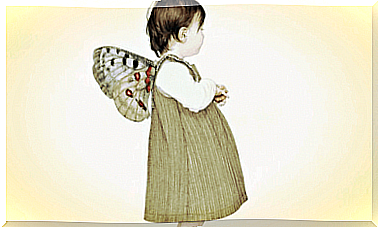Validating An Emotion: What Does It Really Mean?

Validating a person’s emotion or story is such an important achievement that it constitutes the pillar of most aid interventions. Many people in the session feel strange, out of place, as if thrown into an ocean of emotions that they know little about and in which they are unable to navigate.
A few days ago Alice claimed to be unable to justify her immense sadness with a wonderful family like hers and a not bad job after all. Francesco, on the other hand, was angry with himself because he had never tried hard enough in life.
Luca was in a state of anxiety because they had changed his shift and his son left school before he could go and pick him up. He was also angry with himself because he felt that way: he knew it wasn’t a problem and that at most, son, he would only wait five minutes. But what does it really mean to validate an emotion. Let’s find out in this article.

It is normal to feel this way
One of the first ideas that we will try to convey to Alice, Francesco and Luca is that it is perfectly normal to feel this way. That they are not “emotional madmen”, who feel a coherent emotion, not so much with the world, but with the parallel reality that they have built for themselves. The one in which they practically operate.
With validation, therefore, first of all the person stops feeling weird. You can more or less intervene, but in no case will it be at fault. It may be more sensitive, more neurotic, or carry a load of irrational ideas, but the problem will not lie in its nature anyway.
It is the time when we tell the patient / client that he has the power to improve. What? For example, managing your emotions or setting priorities. The validation, therefore, also serves to give him back some of that control that he might think he has lost.
In that sense, validation is also a wonderful resource for taking care of relationships. If done right, it goes a step further, an approach that will never generate rejection. At the same time, we communicate to the other that we have listened to him attentively (active listening).
Validating an emotion is recognizing
Warning: stating that what he has tried is normal does not mean that the problem he faces is extraordinary or not or that the emotional intensity he experiences is really helpful. It would be useless to tell Luca that he doesn’t do anything if his son waits a bit, because he already knows this and in a certain sense he has already punished himself. By insisting on this idea, we will only make him feel worse, stranger. Just like it would happen with Alice.
That’s why saying “stop being sad” or “there’s no reason to feel this way” is totally counterproductive. These imperatives do not serve to make a person feel better.
Instead, they weigh down a load that you are already carrying on your own. If there is something that the person needs, it is just the opposite, that is to recognize the effort, which is fighting that battle.

Validating an emotion: the best starting point for emotional help
Through validation, we open the doors to emotional expression, without the fear that the person will feel judged or criticized. Furthermore, as already stated, we give her back the control of emotions. By placing ourselves, moreover, as a support figure, a help.
She will feel that we understand her, that we have grabbed the other end of the rope she threw at us and, therefore, our chances of helping her will increase considerably.
As you can see, validating an emotion is one of the essential elements behind any relationship, but it is particularly important in clinical settings. And it is also true in emergency contexts. For example, a person may be very disoriented because they cannot feel deep sadness in having lost family members in a tragedy.
Such emotional numbness could lead her to conclude that she did not love them enough and to feel guilty about it. Let us now consider that the manifestation of guilt and sadness may have characteristics in common. How could we help you if we are unable to recognize the clinical picture we are facing?









